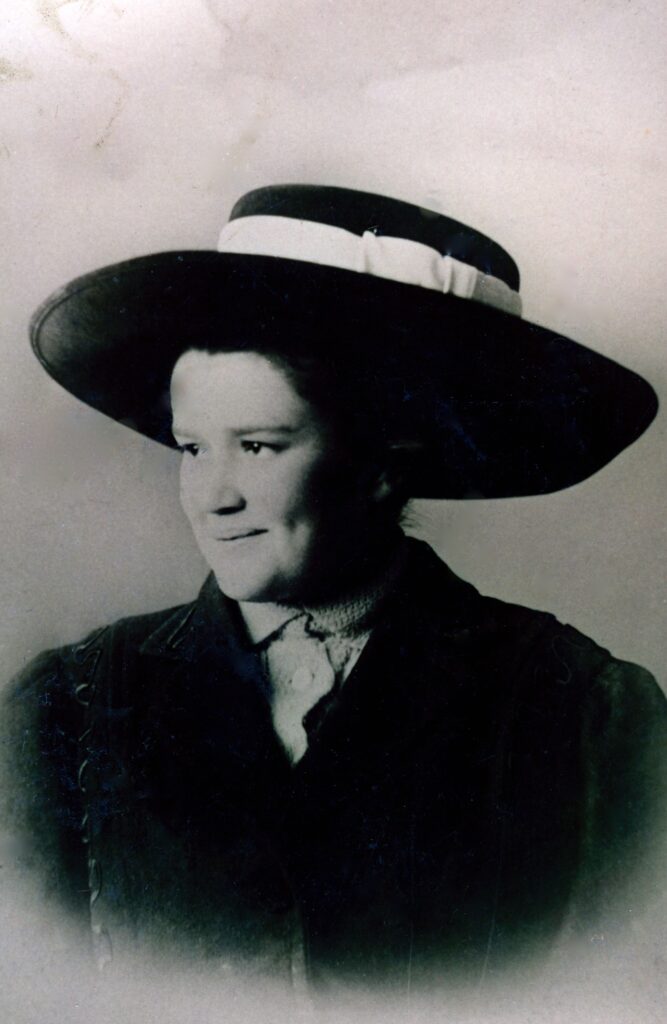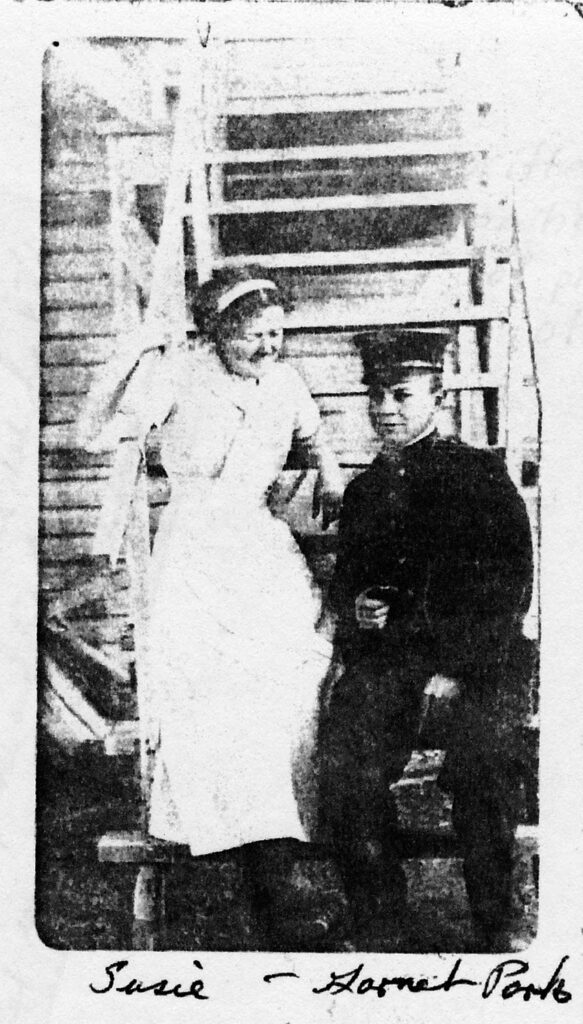Susan “Susie” Parks
1895 - 1981
Luna County
A 21-year-old switchboard operator, she woke early in the morning March 9, 1916, to gunshots and shouts of, “Viva Villa!” as Pancho Villa’s army raided her village. Under direct gunfire, she used her switchboard to summon National Guard troops from Deming, saving herself, her daughter, and many others.
During the Mexican Revolution (1910-1920), the United States, particularly citizens in the southwestern states, kept a close watch on events across the border. In 1912, the army established a military post near the small village of Columbus, New Mexico, to protect American settlers along the border. For reasons still not fully understood, Pancho Villa led some 400 Mexican “Villisatas” across the border on the morning of March 9, 1916, and raided the small town of Columbus, New Mexico. A young telephone operator named Susan Parks bravely summoned nearby troops, saving many lives, including her own and her baby daughter’s.
At the time, Columbus, New Mexico, was still a fairly new settlement: A census conducted three years prior showed 373 residents. The Columbus switchboard operator at the time of the raid was Susan Parks, 20 years old. She and her husband, Garnet “G.E.” Parks, editor of the Columbus Courier, had one child, a daughter named Gwen, only a year and a half old. According to the Telephone Pioneer Museum of New Mexico, “The telephone office had burned down in January, but the little telephone switchboard had been saved from the fire” and was installed in the newspaper office; the couple lived in the rear. With her husband out of town during the raid, she and the baby faced the onslaught alone. Clutching her baby in her arms, Parks literally dodged bullets and made her way to her telephone switchboard at the front part of the building.
In “A Brave Woman in a Border Town,” a 1981 article in Albuquerque Journal Magazine, writer Toby Smith recounts the scene:
“Feeling she must summon aid, Susan struck a match to better see the numbers. Sight of the flame sent a volley of gunfire through the shop’s window. Glass splinters tore into Susie’s face, neck and arms, and into the arms and face of her baby. Still clutching Gwen, Susie ducked, then crawled back across the room and stashed the child under the bed. Rather than curl up with Gwen, Susan returned to her switchboard.”
The young woman then telephoned the Deming National Guard, under the command of Captain Brock, for help. Brock’s troops soon arrived in Columbus, as the wounded and bleeding Park huddled under the bed with her child for safety. Sometime later, a soldier arrived and escorted her and her child to the army camp for medical treatment, and a second soldier took over the switchboard. When the raid and casualties were assessed, eight American soldiers and ten civilians had been killed.
Susan and her husband left New Mexico in 1919. In subsequent years, she continued to demonstrate the strong character she exhibited that March morning. She reportedly sold baked goods out of the back of the family’s old Dodge and later hoed strawberries. She was the first woman sheet metal worker in a Seattle shipyard during World War II, and was among thousands of women nicknamed Rosie the Riveter during the war.
Susan Parks died on April 19, 1981 at age 85, in the Valley Terrace Rest Home in Puyallup, Washington. Her daughter passed away in 2004 at age 90. The switchboard Parks used during the raid is on display at the Telephone Museum of New Mexico in Albuquerque. The replacement set used in Columbus after the raid is on display at the Columbus Historical Museum.
Sources:
Information and a review of the background text by Richard R. Dean, Historian and Archivist at the Columbus New Mexico Historical Society and Columbus Train Depot Museum. August-September 2016.
Giese, Dale F. Forts of New Mexico. Silver City, NM: np., 1995.
Julyan, Robert. The Place Names of New Mexico. Albuquerque: University of New Mexico Press, 1998.
Katz, Friedrich. The Life and Times of Pancho Villa. Stanford, CA: Stanford University Press, 1998.
Melzer, Richard. Buried Treasures. Santa Fe: Sunstone Press, 2007.
Morgan, Brandon. Columbus, New Mexico, and Palomas, Chihuahua: Transnational Landscapes of Violence, 1888-1930. Thesis. Albuquerque: University of New Mexico, July 2013.
Smith, Toby. “A Brave Woman in a Border Town.” Impact, Albuquerque Journal
Magazine, July 28, 1981, p. 9.
Telephone Museum of New Mexico. “Susan Parks.” Online website exhibit:
http://www.telcomhistory.org/vm/heroesParks.shtml. Accessed July 6, 2016.
Giese, Dale F. Forts of New Mexico. Silver City, NM: np., 1995.
Julyan, Robert. The Place Names of New Mexico. Albuquerque: University of New Mexico Press, 1998.
Katz, Friedrich. The Life and Times of Pancho Villa. Stanford, CA: Stanford University Press, 1998.
Melzer, Richard. Buried Treasures. Santa Fe: Sunstone Press, 2007.
“Susan Parks.” Telephone Museum of New Mexico,
http://www.telcomhistory.org/vm/heroesParks.shtml, accessed July 6, 2016.
Parks, Shannon. In the Face of Flying Glass: Susie Parks, Border Town Hero of the Pancho Villa Raid. Sunstone Press, Sep 18, 2023. https://www.susieparks.com/
Columbus Raid Memorial ‘A Day of Contrasts’
Border event remembers Pancho Villa and a civilian massacre By Algernon D’ammassa
https://abqjournalnm.newsmemory.com
Directions:
Susan “Susie” Parks
Luna County
Community leader | Public servant |
Statehood (1912 - present) | Territorial Period (1848 - 1912) |
Southwest








